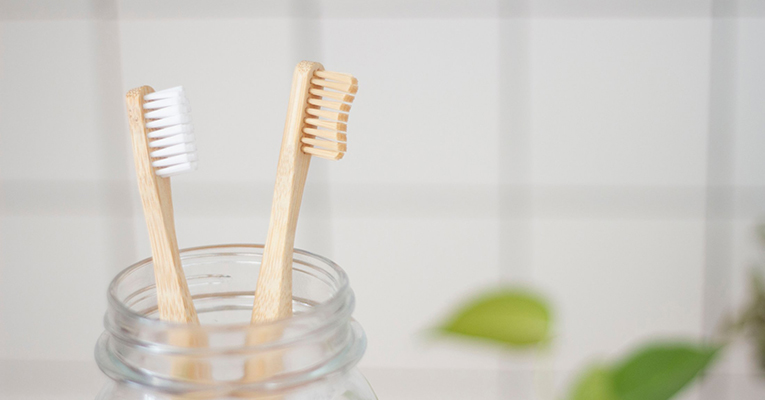Your smile is one of the first things that anyone you meet notices about you. So, having a nice, bright-white, evenly colored smile is a simple way to make a good first impression, and teeth whitening is one of the simplest ways to achieve this look. Whitening your teeth can improve the look of your smile and even take years off of your appearance.
There are, however, several methods for whitening teeth. While they are all similar in principle, they do have their differences in terms of how they work, how quickly they work, and what kinds of results you can expect.
5 Popular Teeth Whitening Products and How They Work
1. In-Office Professional Teeth Whitening
Professional teeth whitening that’s performed in the dentist’s office is the safest and most effective way to whiten your teeth. These types of treatments use medical-grade bleaching agents (peroxide) in a higher concentration than other products in addition to medications that are designed to help prevent patients from developing post-whitening sensitivity. In-office teeth whitening treatments deliver predictable results in a much shorter period of time since they are administered under the supervision of dental professionals.
2. Professional Teeth Whitening at Home
There are also professional teeth-whitening treatments that patients can administer themselves in the comfort of their own homes. These typically include patient-specific instructions for administration times and frequency in addition to custom-designed whitening trays and whitening gel that is slightly less potent than the whitening agents used in a professional setting.
Professional at-home whitening can deliver similar results as in-office teeth whitening, but it typically requires more whitening sessions to achieve the desired results.
3. Teeth Whitening Strips
Teeth-whitening strips are products that are available over-the-counter for whitening your teeth. They typically consist of plastic strips coated with a whitening gel that are worn in 20 to 30-minute daily intervals throughout the course of treatment which often lasts about a month.
Like professional treatments, teeth whitening strips usually contain the bleaching agent, peroxide, but in a much weaker concentration than professional products. As a result, these require a lot more time to achieve your desired level of whitening.
4. Teeth Whitening Toothpastes
Teeth whitening toothpaste, also available over-the-counter, does not actually bleach your teeth since it does not contain bleaching agents like peroxide. Instead, whitening toothpaste contains mild abrasives and other chemical agents that are designed to remove stains and discoloration from the teeth.
Achieving your desired results with whitening toothpaste can take a long time, depending on the severity of stains and the shade of your teeth when you begin using whitening toothpaste. As a result, whitening toothpaste is usually recommended as a great way to maintain the results of professional whitening treatments, but not necessarily the best way to achieve results similar to those you can get with professional teeth whitening.
5. Teeth Whitening Rinses
Teeth whitening rinses are similar to other mouthwashes that help combat the bacteria that are responsible for bad breath and gum disease. However, whitening rinses also contain small amounts of whitening agents like peroxide that can brighten your smile while you rinse. Depending on the severity of your stains, whitening rinses can require several months before you see truly noticeable results. So, like whitening toothpaste formulas, whitening rinses are a better way to maintain a professionally whitened smile, rather than to create one.
How to Maintain Your Teeth Whitening Treatments
As stated above, using whitening toothpaste or a whitening mouth rinse is a great way to help maintain your bright, white smile after a professional whitening treatment. You can also keep your smile looking bright by avoiding highly pigmented foods and drinks that can stain your teeth such as berries, chocolate, red wine, coffee, and tea. Additionally, using tobacco products can also severely stain teeth and should be avoided for a brighter, healthier-looking smile.
Should You Whiten Your Teeth?
Teeth whitening is a simple way to improve the look of your smile. However, it isn’t right for everyone. For example, teeth whitening is not recommended for children under the age of 16, women who are pregnant or nursing, individuals with certain allergies, patients with gum disease or severe tooth decay, and patients with tooth sensitivity.
It is also important to note that the bleaching agents in teeth whitening products do not work to remove stains from or change the color of dental work such as caps or crowns, bridges, dentures, tooth-colored dental fillings, inlays, onlays, veneers, or dental bonding. If you have dental work that needs to be refreshed, our dentist can talk with you about the process of maintaining your dental restorations.
Of course, you will need to speak with a dentist before you get professional teeth whitening, but we also recommend talking with your dentist before you start using over-the-counter teeth-whitening products too.
Which Product for Teeth Whitening Is Right for You?
To find out whether or not teeth whitening is right for you and to learn more about the differences between in-office professional teeth whitening, at-home professional teeth whitening, and over-the-counter teeth-whitening products, we welcome you to schedule a teeth whitening consultation with a dentist at Smiles at the Exchange in Dayton today.

 Meet Dr. Botti
Meet Dr. Botti
 Meet Dr. Scranton
Meet Dr. Scranton
 Our Team
Our Team
 Patient Forms
Patient Forms Online Bill Pay
Online Bill Pay Benefit Program
Benefit Program Your First Visit
Your First Visit